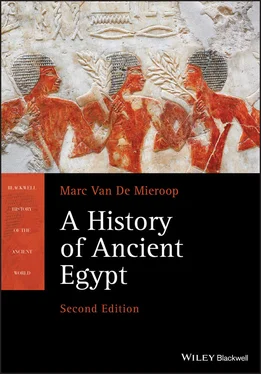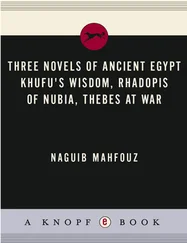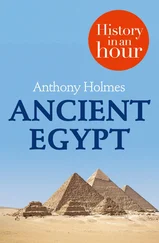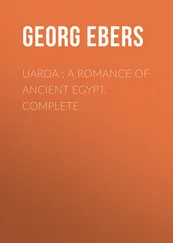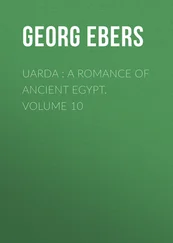1 ...6 7 8 10 11 12 ...28 Figure 12.5An example of the interest in the past is this inscription on stone commissioned by the Nubian king Shabaqo. The text purports to be the copy of an Old Kingdom papyrus with a creation story centered on the god Ptah. It was at the earliest composed in the 19th dynasty, however, and shows how the antiquity of a text was thought to give it authority. The damage on the stone is the result of its use as a millstone, which erased 33 of the 62 columns of text. It is made of basalt and measures 66 by 137 cm. British Museum, London EA498. Source: The Trustees of the British Museum / Art Resource
Figure 12.6The period of independence from Persia in the 4th century was not one of organized national resistance against foreign rulers, but involved multiple families and individuals who claimed kinship, sometimes only over part of the country. One such claimant was Psammuthis, who in 392 for some two years controlled Thebes, where he presented himself as pharaoh. This sandstone relief, 37.3 by 45.2 cm in extent, shows the god Montu holding the symbol of life ( ankh ) before Psammuthis’s Horus name and a cartouche with his nomen, followed by the standard phrase “given all life, all joy, forever.” Metropolitan Museum of Art 27.2.1. Source: Rogers Fund 1927
Figure 12.7Although the Apis bull was honored from the very beginning of Egypt’s history, the cult flourished especially in the Late Period. Many statues of the animal exist, both large and small, the latter probably used in private contexts. The example shown here is made of copper and is only 10.8 cm high. It depicts the bull with a sun disk between its horns, an uraeus , and a rectangular cloth on its back. Metropolitan Museum of Art 04.2.486. Source: Gift of Darius Ogden Mills, 1904
Figure 13.1Alexandria in the Ptolemaic and Roman periods was a Greek city in its layout. Some earlier Egyptian planned cities used the gridiron street pattern, but Alexandria had unique Greek features, such as a central main street, a roofed colonnade ( stoa ), an open square ( agora ), and a hippodrome. Also, its buildings were Greek rather than traditional Egyptian. Source: Kenzie, Judith (2007) The Architecture of Alexandria and Egypt , c. 300 B.C. to A.D. 700, New Haven: Yale University Press, p. 38 fig. 38. © 2007 Yale University
Figure 13.2The continuation of Egyptian customs while Greeks and Romans ruled the country is clear in funerary practices – mummification remained the norm. The fresco shown here from the interior of the Alexandria Catacombs (1st–2nd century AD) depicts the goddess Isis in an embalming ritual. While the contents of the scene are fully Egyptian, the style is Graeco‐Roman. © DeA Picture Library / Art Resource
Figure 13.3In the Ptolemaic and Roman eras royal depictions on temples maintained the traditional Egyptian imagery of rulers. Shown here is the 2nd pylon of the Isis temple at Philae with King Ptolemy XII Neos Dionysos offering to the gods Isis and Horus. Were it not for his name in the inscriptions, one would not know that the king was not an Egyptian. Photo: Marc Van De Mieroop
Figure 13.4The Ptolemaic kings expressed their rights to rule Egypt by representing themselves in the manner of earlier pharaohs, and the artists employed the age‐old traditions of sculpture to do so. This 93‐cm‐high torso of a black basalt statue commissioned by one of the later Ptolemies shows him with the royal skirt, the shortened staff in his left hand, the left foot forward, and with his name written in a cartouche on his belt. Metropolitan Museum of Art 1981.224.1. Source: Purchase, Lila Acheson Wallace Gift and Rogers Fund, 1981
Figure 13.5The mixture of Greek and Egyptian practices is shown on this 52.4‐cm‐high limestone stele, which probably stood in a temple in the Fayyum. On the top is a traditional Egyptian depiction of Queen Cleopatra VII making an offering to Isis, who is breastfeeding her son. She is represented as a man, with the double crown of Egypt and the royal skirt. On the bottom the inscription in Greek states that Onnophris, the Greek “president of the association of Isis Snonais” set the stele up on July 2, 51 BC. His name is a Greek rendering of the Egyptian Wen‐nefer. Louvre Museum, Paris E27113. © RMN‐Grand Palais / Art Resource
Figure 13.6The Nubian kingdom continued certain ancient Egyptian practices after they had been discontinued in Egypt. This included burial in pyramids, some 50 of which for kings, queens, and their children are known from Meroe after that city became the center of the kingdom. These were constructed between 300 BC and AD 350. Source: Werner Forman / Art Resource
Figure 13.7The Nubians in the first few centuries AD merged their religious ideas with Egyptian ones, integrating the two pantheons and mixing characteristics from both cultures. One prominent god was Mandulis (the Greek rendering of the name Merul or Melul), a Nubian deity who was considered the son of Horus and had several of his father’s attributes. On this relief from his main temple at Kalabsha, in Lower Nubia, he is shown as a falcon. He wears a crown with ram’s horns, the double uraeus , and high feathers. Source: Erich Lessing / Art Resource
Figure 13.8In the early decades of the common era Amanitore was queen of Meroe. She is depicted here on the pylon of the Lion Temple at Naqa in the traditional pose of an Egyptian ruler defeating enemies. The representation of her body and the fact that she is shown as a warrior are non‐Egyptian elements, however. Source: Werner Forman / Art Resource
Map 1Egypt and Nubia from prehistory to the Middle Kingdom
Map 2Pyramid locations
Map 3Egypt and surrounding territories in the New Kingdom
Map 4Western Thebes
Map 5Egypt’s Syrian dependencies in the Amarna age
Map 6Late Period Egypt
Map 7The eastern Mediterranean in the first millennium
Preface to the Second Edition
When this book appeared in its first edition in the fall of 2011, Egypt was constantly in the news, not for its ancient past but because of the popular uprising against the regime headed by Hosni Mubarak, a president who was regularly called “Egypt’s last pharaoh.” The following years were often very difficult for the country’s inhabitants, with much political conflict, insecurity, and a collapse of the tourism industry, which had been one of the major sources of income. Modern events in a region do impact what students of its history can do, and indeed many archaeological projects were suspended. Yet research on Egypt’s ancient civilization did not slow down. Scholars around the world continued to write on all aspects of history, pursuing established approaches, but also introducing new concerns and sometimes new methodologies. For example, DNA analyses of mummies are more widespread today than they were 10 years ago, while climate change has become more popular as a historical explanation. Also, new archaeological discoveries, often the work of Egyptian researchers, continued to be announced. At the same time, I was encouraged to rethink how to teach the history of ancient Egypt to a succession of undergraduate students at Columbia University, with their varied backgrounds and interests, so when I was given the opportunity to revise this textbook, more than a decade after the first edition was written, I was happy to do so.
The aims of the book remain the same from the first edition. It aspires to provide anyone with an interest in ancient Egypt with a basic survey that pays attention to all periods of its 3000‐year‐long history and covers the main events. It is intended to be used as an undergraduate textbook – as I do in my classes – but also to be accessible to a wider public. For its structure it follows the chronology of ancient Egypt’s political history, a traditional format that forms the background of all investigations on that culture. Archaeologists, museum curators, and ancient historians with many different approaches and interests, all place their comments in the chronological boxes of Kingdom and Intermediate Periods, dynasties, and individual reigns, which to them as specialists are almost natural and which anyone who wants to contextualize anything ancient Egyptian has to learn. My chapters coincide with these divisions and use them in their titles in order to provide a structure that enables readers to situate other information within that structure. Within each chapter, I do provide chronological tables that break the period up into dynasties, but I do not survey the periods dynasty by dynasty, or reign by reign, as some other books do. I also hope to give every era sufficient attention and not privilege certain times when Egypt’s “glory” was the greatest over others when its remains were not so grand. Obviously, periods when the evidence we have is very rich and we can study the history in more detail get more room in this book than others. Also, the time after Egypt’s conquest by Alexander in 332 BC to the end of my story in AD 395, for which we have an abundance of documentation that enables an intricate reconstruction of events, is squeezed into a single chapter. That period is often called “Egypt after the Pharaohs,” and I follow most histories of ancient Egypt in giving it less attention.
Читать дальше
